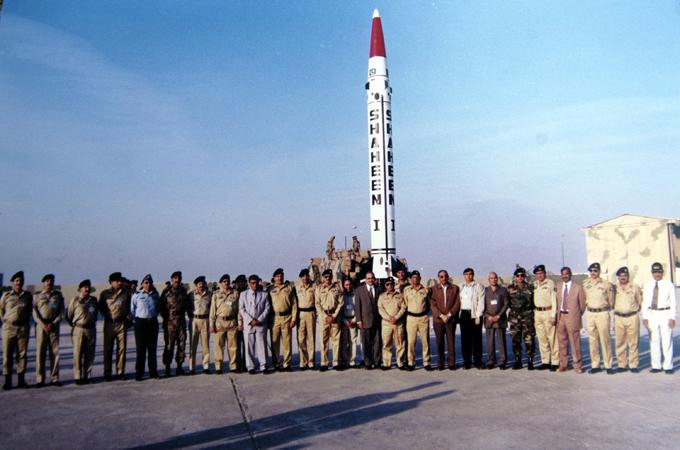
Deterrence is the art of producing, in the mind of the enemy, the fear to attack.
Essentially every entity or country has to develop certain policies in order to meet its security concerns, both regionally and globally. While defining the tasks for adopting a certain set of principals or policies, Henry Kissinger stated that the aim of choosing certain policy options is to “translate the power into policy” so that states know “what objectives are worth contending for and determine the degree of force appropriate for achieving them.”
Pakistan had two choices when shaping and designing its nuclear deterrence—the war to deny deterrence and the nuclear war to fight deterrence. Both choices had unique implications, including developmental strategies. Deterrence by denial required a minimum number of weapons, whereas war-fighting deterrence needed a large number of nuclear arsenals and a variety of delivery means and missile defence programs.
Pakistan’s economy and strategic interests allow only the pursuit of war-denying deterrence. This is the reason why Pakistan does not believe in the need for nuclear parity and is just seeking to maintain a deterrent equilibrium, or more precisely, is just balancing the threat caused by India’s conventional superiority. Pragmatically, if one state has to go for a war-fighting nuclear doctrine, then it is desirable for that state to opt for nuclear parity from its adversary. However, if the purpose is only to serve the deterrence, then it is better to seek a balanced deterrent posture. As a result, Pakistan principally decided to adopt the option of “Credible Minimum Deterrence.” Now the question of minimum deterrence and its credibility comes under view.
Since Pakistan is a relatively minor nuclear weapon state, the term “minimum” is used to signal or to send a satisfactory message to the international community. Minimum also implies that Pakistan depends on smaller nuclear weapons that are comparably better managed in terms of deployment, maintenance, command and control systems, etc. Certainly the minimum is intended to “[minimize] the dangers of inadvertence and misuse of nuclear weapons.” The term minimum also mollifies the proliferation concerns of the international community.
Alternatively, “credible” has been added in order to add ambiguity, maybe to have a psychological comfort or to leave room for modernizing arsenals. Policymakers in Pakistan feel convinced that this ambiguity serves deterrence well. Credibility would in such circumstances help keep a psychological check on the adversary. Moreover, it would provide the protagonist an additional cushion of comfort. Sadia Tasleem expresses this idea in her write-up titled “Towards an Indo-Pak Nuclear Lexicon – II: Credible Minimum Deterrence.” According to Tasleem, “the emphasis on the word ‘credible’ was meant to reinforce the importance of credibility. It does not suggest a shift from Minimum Deterrence.”
Nevertheless, the posture of Credible Minimum Deterrence has remained a principle option of Pakistan’s nuclear policy. This principle is based on the concept that Pakistan’s nuclear policy is driven by the perceived threat to its security from India, and is therefore India-centric. According to Agha Shahi, Zulfiqar Khan, and Abdul Sattar, “deterrence was the sole aim and a small arsenal was considered adequate.” Ironically, it is also a fact that the introduction of tactical nuclear weapons and battlefield weapons in the region is actually a modernized advancement in the inventories. Those are meant to balance out this superiority complex.
Therefore, it could be concluded that it is only when states feel threatened that they opt to defend their territory and sovereignty, which compels them to maximize and enrich their security measures under the perceived threat of vulnerability. However, in order to maintain a deterrent posture according to my understanding, the quantitative number is not necessary, as the possession of a nuclear weapon is itself enough for crafting deterrence. Even if a state possesses just one nuclear weapon, nuclear aggression from the other state can be discouraged. Therefore, the question of numerical parity or nuclear sufficiency does not make sense in this instance. As a result, it would not be incorrect to conclude that credible minimum deterrence is something different than nuclear parity and nuclear supremacy.
***